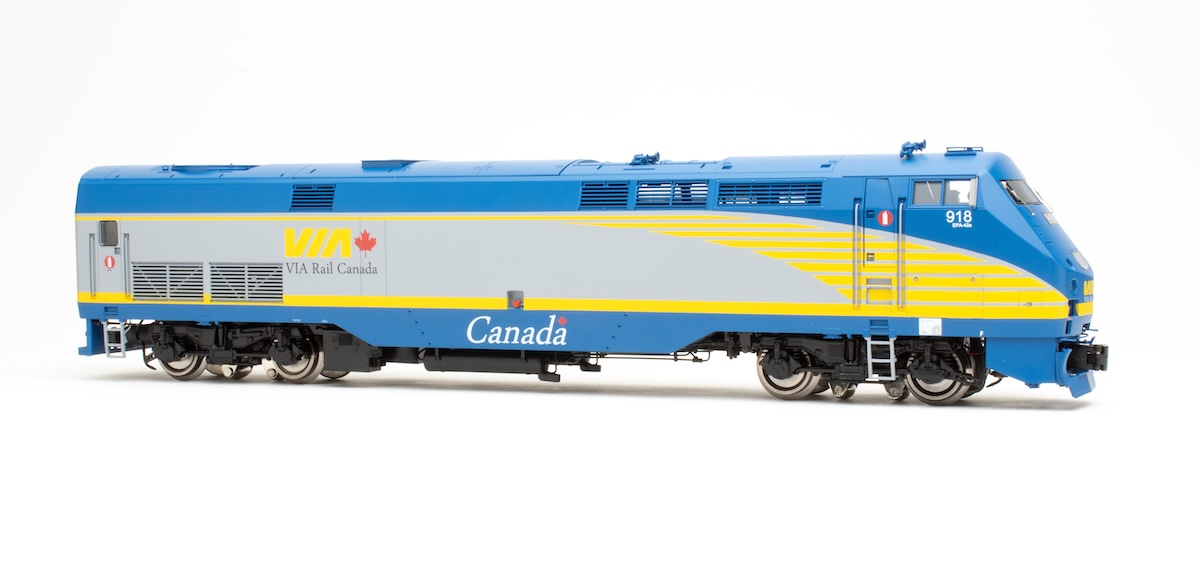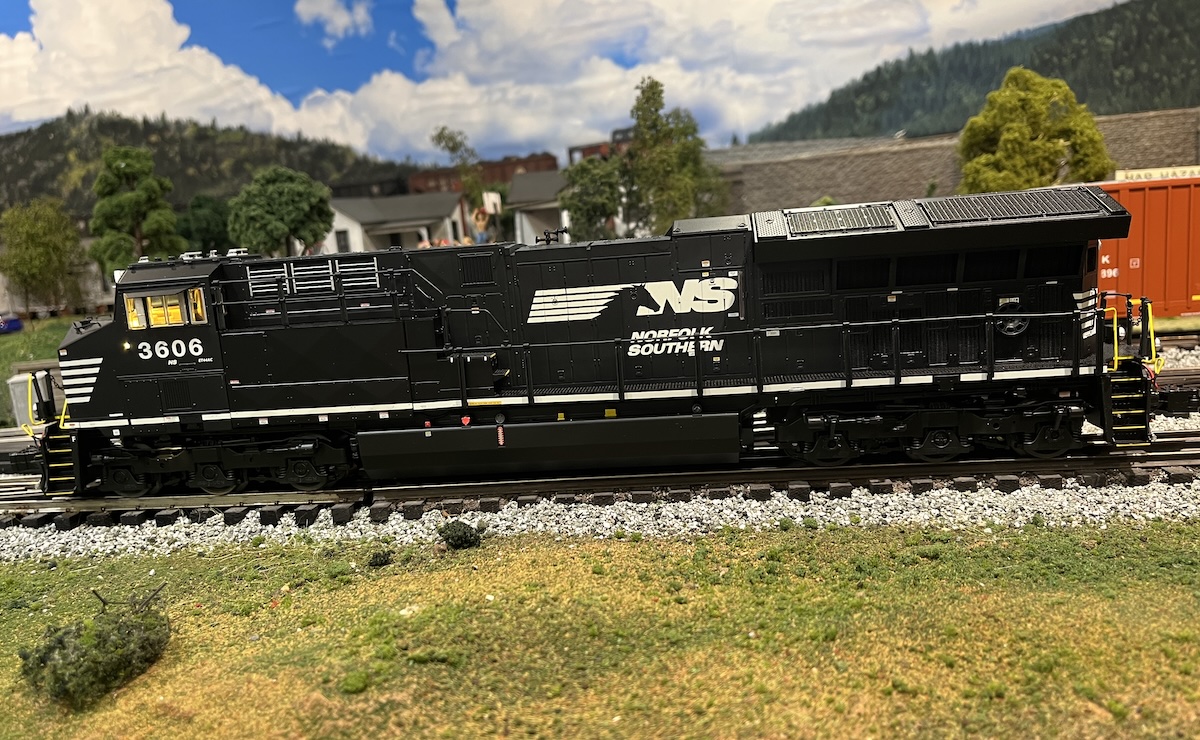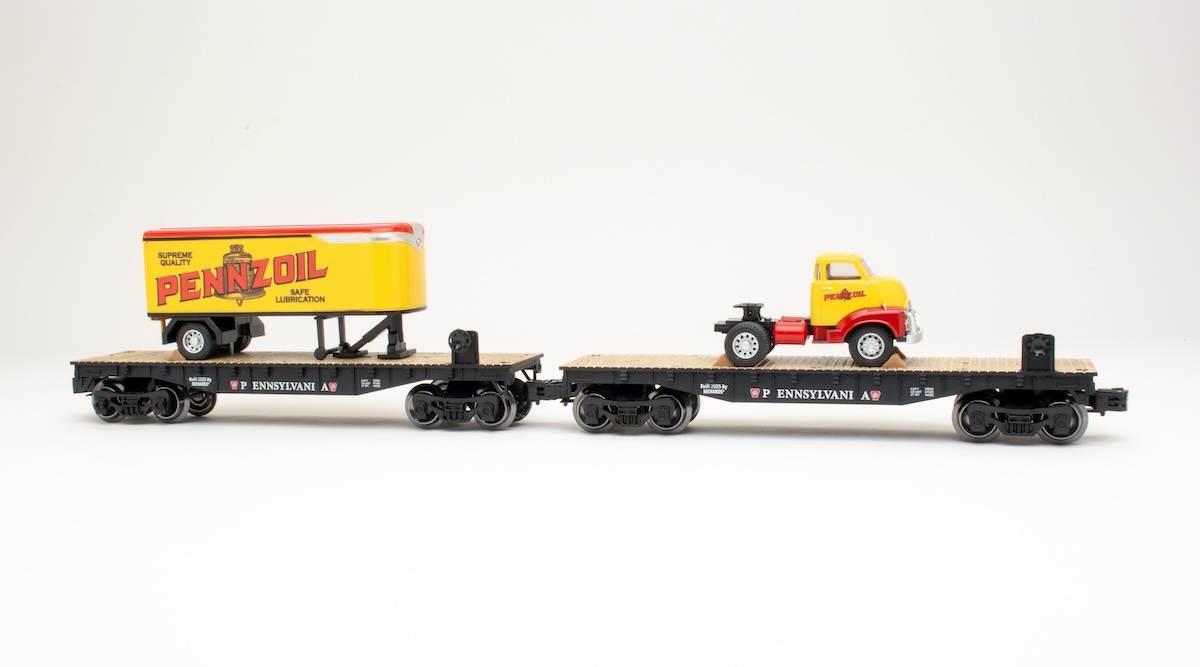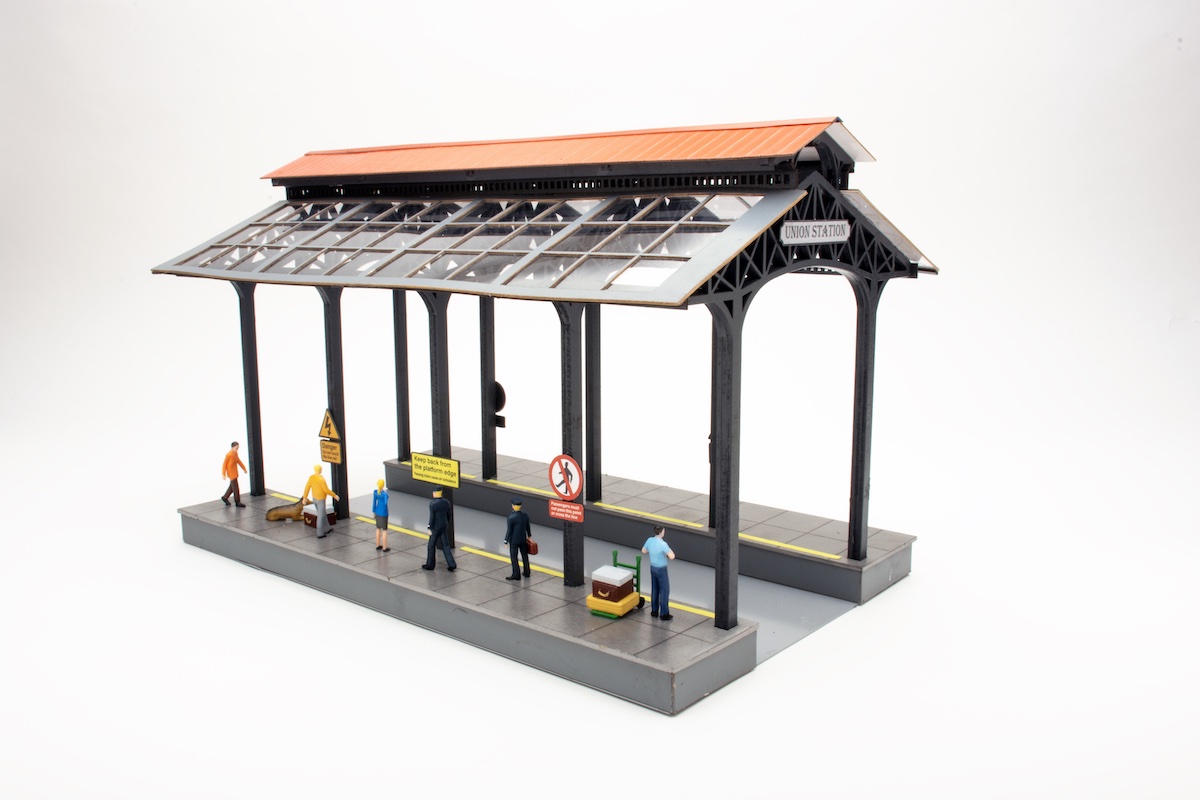Atlas O has set a high standard for scale detailing in the world of diesels, so any steam power has quite a challenge if it is to meet and exceed that level of excellence. The model before us today is a little gem.
Opening the box
The model has the traditional heft you find with any Atlas O Master line product, and every nut, bolt, and screw is in place and locked tight. “OK,” the skeptic may ask, “so it weighs a lot and feels nicely assembled. What are some of the details?”
Well, the pilot looks great, with cast-in rivet detail on the footboards, a grab iron, and an uncoupler arm.
The smokebox has plenty of rivet and hinge detail, and handrails run up the face of the smokebox and along the boiler. On the top of the locomotive’s face you’ll find a headlight, and between the headlight and smokestack is a turbine.
The boiler has cast-in rivet, seam, and step detail as well as add-on piping. The top of the boiler has two sand domes and a steam dome. The sand domes have terrific additions – grab irons on the dome sides – and the steam dome has a whistle and two pop-off valves. The bell and whistle both have lanyards leading to the cab.
Especially noteworthy are five conduits leading into the top of the cab from a junction with a large valve handle atop it.
The running board has a textured pattern. The detail below is just as nice, featuring drain pipes, sand lines, levers, and cylinders, as well as a fully rigged running gear with a realistically subdued finish.
The cab has some nifty features: grab irons for climbing up, two crew figures, opening windows and roof hatches, a nicely appointed backhead, and a forward window that is angled open.
The back of the cab is partially enclosed and has a wall equipped with a window behind each crew figure. There’s a large, tan plastic curtain on the sides and top that simulates the curtain that protected steam crews from the elements. A textured metal deck plate folds down from the cab to meet the tender deck.
Beneath the cab, you’ll find an array of drain lines that not only look fragile but also are easily bent by clumsy fingers. Handle with care!
The tether connecting the locomotive and the tender is different from the tether on the O-27 Atlas O Industrial Rail 4-4-2 (Reviews, February 2008).
The tender receptacle on the 0-6-0 is fed by seven wires (four inside one plastic sheath and three inside another). This arrangement creates two sheaths in a “V” shape. The tether then plugs into a component beneath the tender.
Depending upon how fumble-fingered you are, you may experience some awkwardness mating the drawbar and the tender. I had that drop deck plate end up under the lip of the tender two or three times.
The tender has a low profile (small coal bunker with a cast-in coal load). Each road name has a tender appropriately designed for that railroad. For example, the one that goes with the Pennsylvania RR steamer is flat. The Baltimore & Ohio tender is raised, while the Chicago & North Western tender is raised still higher.
Each truck has two brake chains on the side frame. The tender also has grab irons on the front and a ladder on the rear and a backup light.
Lift the water hatch, and you’ll find on/off controls for sound, smoke, run/program, and speed control, as well as a volume control.
The locomotive’s painting and decoration is standard Pennsy subdued. The smokebox is gray, most of the locomotive and tender is green, and the roof and top of the tender are oxide red.
On the test track
Overall, the Atlas O 0-6-0 is a fun locomotive to operate.
Running in Lionel’s TMCC and Legacy modes proved to be a bit smoother than running in conventional mode. The higher track voltage in Command/Legacy enabled this steam locomotive to run at a slower low-end speed and a smoother pace than running conventionally.
Our low-speed average was 2.7 scale miles per hour, while the high-speed average was 31.8 scale mph (probably faster than any working 0-6-0 ever toiled). Magazine subscribers can check out a video of the 0-6-0 in action (and judge the smooth, low-speed action for themselves) by going to ClassicToyTrains.com and clicking on “News,” then on “Videos.”
Drawbar pull was 15 ounces, which was satisfactory for a switcher. Hey, these weren’t pulling coal drags or powering the 20th Century Limited along the Mohawk; they were shunting a few cars around to build trains or switching out factory sidings.
The model features traction tires on the center (not rear!) two drive wheels. The locomotive has two power pickups spaced 2 inches apart, and the tender’s pickup rollers are 13/4 inches distant.
Coil couplers are mounted on the pilot and tender, which means you can actually switch with this switcher!
Probably the most negative thing I can say about the locomotive is that the sound system fails to live up to the model’s great looks. Unfortunately, this is the inescapable conflict of fitting a small, scale-sized tender with a speaker robust enough to get the job done.
The result in this case is sound reproduction that would have fared better by comparison several years back. There was a bit of distortion in sound reproduction, and the whistle sounds were a tad tinny to my ears.
On one home layout, the Atlas O model occasionally seemed to short out on tighter curves (but still wider than the model’s minimum O-36). At first we suspected this might be caused by the drain pipes along the side, but upon reflection we aren’t sure whether those pipes are metal or plastic.
These quirks seemed to be confined to one specific layout.
The Atlas O USRA 0-6-0 is a fine-looking die-cast metal model with detailing that rivals a brass locomotive. It operates nicely at low speeds and will look right at home in a switching yard or on a branch line. Hats off to this product – it is an excellent beginning for Atlas O’s scale steam power program!
Price: $649 (no. 1703-1)
Features: O-36 operation, can-style motor, die-cast construction, TrainMaster, RailSounds, speed control, coil couplers
Staff comments: Beautifully executed model, Legacy command control gets the most out of its TrainMaster system. Speed control was first-rate. – Bob
Sound system comes off sounding a bit shrill, but lowering volume helped reduce some of the edginess. – Kent
Made in China for Atlas O















This is a beautiful model. From the review here it looks to have great, delicate details. Atlas has given us Steam era/Early diesel fans much to smile about. I'll be interested in seeing what larger steamers they decide to build in the future to go along with those wonderful woodside reefers and 8K gal. tank cars, etc. This is a very,very good start.
I just purchased the Atlas 0-6-0 and I really like it. Reading past comments I was a little cautious when taking it out of the box and connecting the tether up from the engine to the tender but if you lay it on it's side and use tweesers or long needle nose pliers as per the instructions there is no problem.
I ran it around my layout that has 40 inch diameter curves and it ran great. Sounds are not the best but acceptable for me.
All in all a nice looking locomotive.
I was able to get this loco for a good price ($400) but probably would not have bought it if I had realized just how awkward the tether connection is. If it is not on just right, it tips the rear of the engine and front of the tender slightly into the air. It's not pretty to look at, and the on-line pics I saw were for the 2-rail version and did not show the tether. I agree with Bob's sound system comments, and this might be a rare instance where I think the extra piping is actually excessive. It's hard to decide just where to pick it up without damaging the soft brass pipes. Also, to add the curtains, you must drill holes with a template which can frighten off some buyers (like me!)
I have had one of these for over a year and concur with most of your comments. Yes, the sound is best on lower volume. In fact I now have my third speaker in place: blew out the first 2. Advice from Atlas: "Keep track voltage under 18v."
Although you observe that you can switch with this switcher, the front coupler does not have enough clearance to do so on 36" curves.